
The Eighth Investment Idea: Investing in Your Career
One of the key goals of the Investment Ideas podcast is inspiring actuaries who have gravitated towards investing to reconnect with their profession.
In this special article, Douglas Isles, the co-host of the podcast series Investment Ideas, shares his career journey across both disciplines and explains the benefits from having his feet in both camps.
As he looks back, Douglas hopes to share some of the things he learned along the way, with a view that others may apply these lessons to help have a more rewarding career journey.
Part 1: The Singapore moment
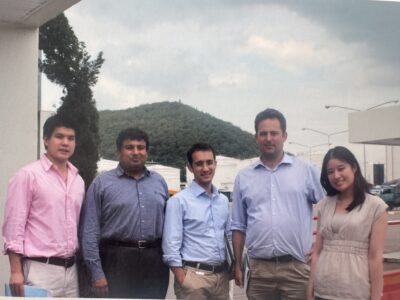
Some moments in life force us to pause and reflect.
For me, that moment came in Singapore in my mid-thirties.
I was promised a chance to run a fund, lead an office and drive offshore sales. It was my dream job. Then the Global Financial Crisis hit.
Overnight, the landscape shifted and this golden opportunity became an isolated existence. I was far from home and in professional limbo.
So, I did something I had never done before. I reached out to someone I respected and asked: “What am I actually good at?”
And their response was. “You tell me.”
I wasn’t expecting that. I needed reassurance, validation or a motivational speech. Instead, I was forced to look inward. And when I finally put words to my strengths, something shifted. By naming my strengths, I began carrying them in my head, restoring my confidence.
That moment led to a framework that shaped my career. That framework is now what I use when someone seeks career advice. I’ll call it 3×3.
We’ll come back to it later, but first, let’s go back to where it all began…
Part 2: Chocolate dividends
I discovered the stock market in September 1987.
My maths teacher, Jimmy Cowan, who was also my rugby coach, asked the class to each buy a box of chocolate Smarties. We were then asked to pick six stocks from the financial page of our local newspaper, the Scotsman.
We invested an imaginary 1000 pounds and tracked their progress; profits were paid in Smarties. My portfolio included my parents’ employers, Marks & Spencer, Bank of Scotland and a construction company called Douglas Holdings, because I liked the name.
One month later, we suffered the infamous Crash of 87. Suddenly, Mr. Cowan had an oversupply of Smarties.
After school, I studied maths at Cambridge University before joining Scottish Equitable, a life insurance and pensions company my paternal grandfather managed in the 1960s and 70s. He met my grandmother there when both were actuarial trainees in the 1930s.
At university, I toyed with investment or actuarial roles. Money seemed vulgar to me, and an actuarial firm framed things around solving big problems, like making sure people were secure in retirement.
That appealed more to my values than the “loadsamoney” culture of 1990s London, and the “retirement riddle” still fascinates me today. Spoiler alert: The answer is to start saving early, sadly usually before the point when most people realise they need to.
On completing my actuarial exams in late 1999, I moved from the marketing department to the investment department and re-connected with the stock market.
Since 1987, stock markets had basically gone up. The technology bubble was peaking. The staff car park was full of sports cars. I toiled away, analysing engineering stocks no-one wanted, while our technology analyst simply said, “It’s going up.” Looking back, the market was crazy – one of the hottest ideas was SMS, the humble text message.
Within a few months, we were in another bear market. Was I jinxed?
Part 3: Evolving landscape
Twenty-five years later, technology is hot again.
The Magnificent Seven—a dominant group of U.S. tech giants—have raised fundamental questions about active investment management. When a handful of stocks drive market returns, how do active investors justify their role?
Having spent my career in active management, this has been confronting. We’re paid well to outperform the alternative, which is owning a little of everything. To earn that, we must define and exploit an edge. It’s not enough to simply be different.
Many young investors believe they can “solve” investing. That’s dangerous. Investing isn’t a static problem — if you think you’ve cracked it, you’ve solved for the past, not the future. Core principles of valuation and market dynamics persist, but the investment edge that existed in the ’80s and ’90s are not the edges of today.
The world of investing has changed beyond recognition. As an actuary, my expertise is deeply rooted in financial maths. But back in my grandparents’ era, actuaries did these calculations without computers. They solved the same problems — assessing risk and forecasting outcomes — with very different tools.
In the 2000s, investment markets saw regulatory shifts democratising information. Fund managers no longer had privileged access to CEOs to gain insights ahead of the market. Today, everyone gets earnings reports, management commentary and key data simultaneously.
The next frontier is AI. Warren Buffett gained his edge by critically dissecting annual reports mailed to his office in “remote” Omaha. Data is now processed at unprecedented speed and scale. Earnings and market sentiment is now analysed in real-time and comments moves markets. Quant funds dig deeper, searching for new patterns before competitors catch up. What once gave selected investors an advantage — like credit card data — now merely explains past price moves.
A key driver of markets is the diffusion of a narrative, and large language models make these much easier to identify and track. The question that troubles me as someone charged with leading a team of investors is, “What’s the minimum technology threshold to stay competitive by 2030?”
Investing is constantly evolving. If you don’t invest in yourself and commit to lifelong learning, you will spend your time solving yesterday’s problems.

My investment career has spanned Scotland, Australia and Singapore, moving across roles —analyst, portfolio manager, stockbroker, client-facing leader and businessperson.
I’m committed to learning, absorbing new ideas and discerning what truly matters. Staying open-minded but building on well-established foundations has been crucial.
Part 4: People-centric
Initially, I believed investing was a numbers game and felt a magic formula might one day unlock great riches.
That changed when I arrived at Platinum in Sydney, where our founders were early adherents to behavioural finance. It was my great unlock. For years, I explained cognitive biases to our clients and how they distort decision-making. Understanding this earlier than most was an advantage.
Then came the Global Financial Crisis—the moment that shaped my Singapore experience. Suddenly, Kahneman and Tversky’s pioneering work was mainstream. Every analyst, fund manager and financial publication knew about Thinking, Fast and Slow.
But knowledge and practice are not the same. Discipline is key. Sentiment swings persist — hype around Bitcoin and meme stocks, despair over China’s markets — proving we haven’t collectively learned, even if we appear to know more.
My next breakthrough came during COVID-19. Surrounded by my library of books, I suddenly realised I’d read them in the wrong order. I’d started with the numbers, but the maths of investing is easy. It’s the people part that’s hard.
Then it really hit me. Investing is all about people. Without understanding people, we can’t expect to succeed.
It’s multi-layered — investors, companies we invest in, their customers, suppliers, competitors and other market participants, all with different objectives.
Corporate success might be measured by profits, but it’s really about meeting someone’s needs and inspiring them to pay more than it costs to provide the good or service. Without first understanding that and then delivering what people want, companies — which are living organisms — cannot thrive.
At that time, having attended a Design Thinking course at Stanford, I was applying my learnings to try and adapt our product offering for younger investors — helping solve the retirement riddle, if you like. This process was illuminating.
Younger people seemed to fall into two philosophical camps — the disinterested, who accept the default savings options and the engaged, who are eager to learn how to invest. This group believed they could learn to do what we do. So, maybe they needed coaching rather than a fund vehicle.
It was in thinking about what that might look like, coaching younger people to pick stocks, that the penny dropped. I concluded that if you didn’t know how to analyse an individual, how could you hope to analyse a company, let alone an economy?
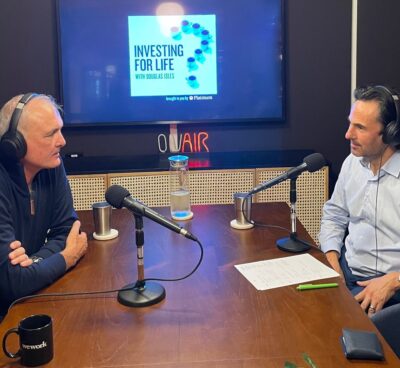
Building on this led to analysing individuals as a learning experience – the Case Study of One – and the essence of the Investing for Life podcast. Our diverse series of guests and their stories were active case studies.
In Investing for Life, the same patterns appeared repeatedly:
- Successful people aren’t just skilled — they’re adaptable.
- They don’t avoid risk — they manage it.
- They don’t fear change — they leverage it.
It’s not just true in markets. It is how we can think about careers, life decisions and personal growth. Setbacks, change and uncertainty are the fuel of progress.
The best investors can profit when setbacks are temporary and when changes foretell deeper shifts. In markets, we are constantly deciding whether to trust momentum or bet on mean reversion. The key is calibrating the odds better than the field—a skill as valuable in investing as it is in career strategy.
This brings me back to 3×3 which, as a foundation for making smart career decisions, can also be about dealing with setbacks or proactively seeking to change.
Part 5: 3×3
The Singapore moment was a career inflection point; I moved from analytical to client-facing roles. I challenged my own long-held, but lightly thought, assumption that I had to re-ascend to fund manager!
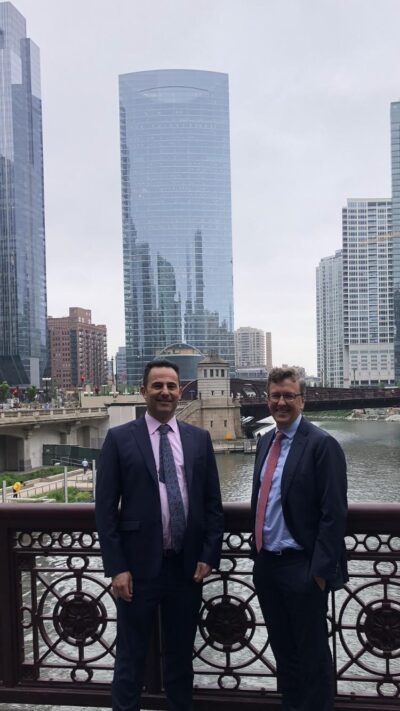
The Global Financial Crisis had derailed any fund launch and after some soul-searching, it all boiled down to a choice: seek an analyst role and try to rescale the heights, or pivot to harness my unique strengths.
3×3 started to take shape, with its unique insight about career development. It helps to structure your thinking on career decisions. It is worth investing time and energy to develop two tight lists:
- three things you excel at
- three things you want from a role
The intersection is the path to fulfilment and long-term success.
My three strengths named in Singapore remain true, albeit augmented by years of personal development:
- numeracy
- representing teams I believe in
- developing others, especially younger people
Today, my ideal role revolves around:
- working with great people
- having a global perspective with exposure to leading-edge ideas
- having a platform to build on my experience
This framework works because it forces self-awareness, aligns strengths and goals, and encourages adaptability. It has proven invaluable for those I have worked it through with.
The beauty of 3×3 comes in an interview. It focuses you on your “superpowers” — remember to have examples — and lets you see if there is a fit.
Part 6: The workplace
Having been inspired by dynasties like the All Blacks or Manchester United under Sir Alex Ferguson, I was pleased a few years ago now to collaborate with GAIN LINE, whose work on Cohesion Analytics resonated deeply. Success in team sports, and I believe investment management is one, is about more than just talent and hard work.
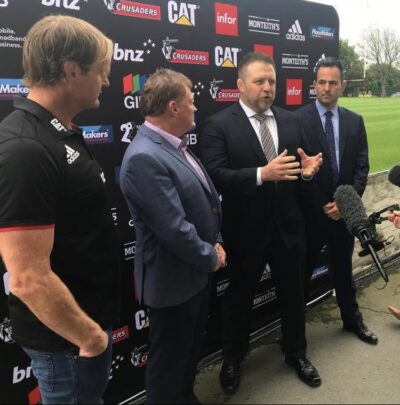
Put simply, there is immense but under appreciated value in shared experience, deeper than culture or trust. The more we work together with people, the better we get. Relationships are most critical when under pressure and hence, keeping teams together pays huge dividends, as long as the “players” have a growth mindset.
Cohesion builds slowly and is a huge competitive advantage that can break suddenly. An offshoot of this work was creating awards for Australasia’s Best Sporting Teams, and meeting with some impressive clubs.
I would add three further observations which may help:
- Workplaces are not structured like schools or uni. I think the more you succeeded at school and university, the harder this can be. Only you can drive your own career development.
- Always leave gracefully. After resigning, people’s behaviour often changes. Being invited back to Platinum was a huge opportunity for me. You never know when or where you will meet former colleagues again.
- A pivotal experience was unsuccessfully applying to become CEO. I was naturally disappointed by an external appointment, particularly as it exposed a common paradox. The Board wanted specific experience which I could not get without being in the role. It reinforced my belief that careers, like investing, are a blend of skill, perseverance and in the short term, luck.
Part 7: Reflections
I am nearly fifty. Half my life has been in investment-related roles. One-third with a single firm. My 50,000 hours of experience far exceeds Gladwell’s 10,000-hour benchmark, yet I often feel like a beginner. Is this impostor syndrome or the reality of an infinitely evolving field?
Beyond work, life will always throw up challenges. In recent years I have given up alcohol, faced mid-life, lost a close friend to suicide, navigated a global pandemic (as we all had to), and have two teenage girls from The Anxious Generation. These experiences remind me that career success is but part of a fulfilling life.
Today, I despair most at social media’s impact on young lives —particularly unrealistic body images and obsessions with fame and wealth, which overlook two fundamental principles: hard work matters and wealth is built by creating value for others.
Moving forward, I’m committed to learning and adapting. Attending short courses at Stanford reinforced the importance of creativity and improvisation. Crash courses in start-ups, creative writing and stand-up comedy all suggested that failure is a springboard for growth. Recently, the Superforecasting workshop reminded me to pay more attention to base rates when making predictions.
Investment, like life, is art as much as a science. It is an intricate balance between skill and luck, analysis and intuition, discipline and adaptability.
Part 8: Homework
Your career, like investing, is a long-term game.
The world changes. Markets shift. Careers evolve. To stay ahead, adapt and grow. The best investors don’t just react to change; they anticipate it. The same is true for careers.
The greatest investment decisions aren’t just about where to put your money, but how you allocate your time, focus, and skills.
Your edge will be driven by how you think, how you learn, and how you apply these lessons.
So, I’ll leave you with two homework tasks:
- Ask yourself if you are investing enough energy in developing your edge?
- Apply 3×3: clarify your strengths and define what you want.
The best investment you will ever make is in yourself.
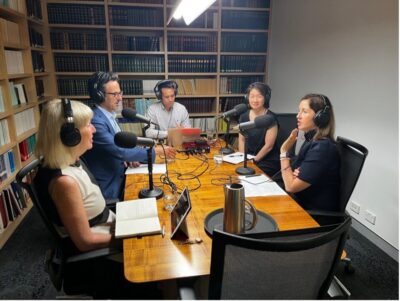
Ready to explore the intersection of actuarial science and investment mastery?
Catch-up on all episodes of Investment Ideas, where Douglas Isles and Jan Swinhoe speak with leading experts on seven critical forces reshaping our financial future.
Each episode runs under 20 minutes, offering actionable insights from an impressive lineup of guests including economists, Order of Australia recipients, and investment pioneers. Listen now!
CPD: Actuaries Institute Members can claim two CPD points for every hour of reading articles on Actuaries Digital.






